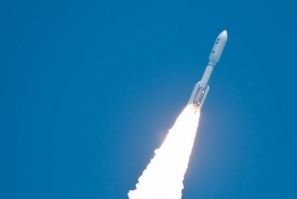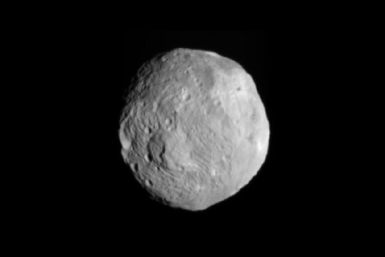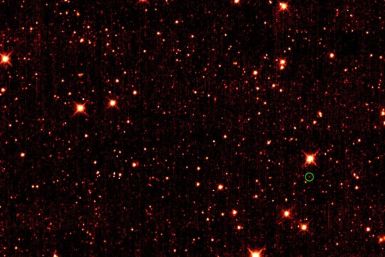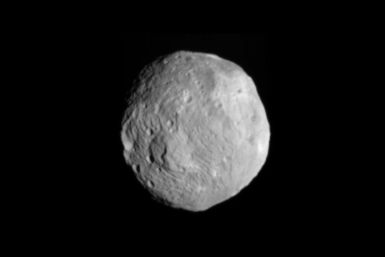NASA's Dawn spacecraft slipped into the asteroid's orbit last month and already beamed hundreds of images for scientists to begin poring over. NASA has taken images over the Vesta's northern Hemisphere after the spacecraft finished its first passage over the dark side of the giant asteroid.
Astronomers have spotted an asteroid close to Earth and moving in the same orbit around the Sun. The rock is 200-300 m wide and sits in front of our planet and is non-threatening.
Asteroid 2010 TK7 was discovered by NEOWISE, the asteroid-hunting section of NASA's WISE mission. It was confirmed as the first Earth Trojan after follow up observations with the Canada-France-Hawaii Telescope on Mauna Kea in Hawaii.
Given that visitations of asteroids are always viewed with an element of fear and anxiety down here, how unsettling is the revelation that multiple asteroids of various sizes could be sharing our planet's orbital path?
The first known Earth Trojan asteroid, called 2010 TK7, has been discovered rotating the sun in Earth's orbit.
Astronomers have discovered a Trojan asteroid, which is orbiting the Sun along the same path as the Earth.
Astronomers discovered earth's first Trojan asteroid dubbed "2010 TK7" rotating the sun in earth's orbit. It is 300 meters wide and about 48 million miles from earth.
Trojan asteroid shares the same orbit as Earth. Will it come in contact with Earth anytime soon?
Trojan asteroids share orbits with other planets in our Solar System to include Neptune, Mars and Jupiter. Two of Saturn's moons share orbits with Trojans, according to NASA.
Earth has joined a group of planets like Jupiter, Neptune and Mars which have Trojan asteroids as companions as they move around the sun in their orbits.
Scientists have discovered first Trojan asteroid companion to Earth that orbits around the sun along with Earth for thousands of years.
Astronomers studying data from an orbiting NASA observatory discovered the first known Trojan of the Earth.
We are not alone - a small asteroid, 1,000 feet across, has finally been found and it's orbital path shares Earth's orbit.
NASA has embraced a presidential directive to plant astronauts on an asteroid, a mission that officials say represents the most ambitious yet for the space agency.
See the first photo of Vesta
NASA's Dawn, locked in orbit around Vesta, has sent back the first ever close-up image of the asteroid (photos below).
NASA's Dawn became the first spacecraft to orbit asteroid Vesta on Saturday. It will remain in the orbit until July 2012.
NASA spacecraft Dawn has entered into an orbit around asteroid Vesta on Saturday.
NASA spacecraft Dawn entered into an orbit around asteroid Vesta on Saturday. It will study Vesta until July 2012. Then, it will travel to and study nearby dwarf planet Ceres in 2015.
NASA's Dawn spacecraft on Saturday has entered orbit around Asteroid Vesta to begin a year-long study of the second-most-massive object in the asteroid belt after the dwarf planet Ceres.
NASA's Dawn spacecraft orbits the asteroid vesta after a four year journey of getting there.
NASA Dawn spacecraft will approach asteroid Vesta for a prolonged orbit. Engineers expect Dawn to be captured by Vesta's gravity and into a prolonged orbit at approximately 10 p.m. PDT Friday, reported NASA.






























